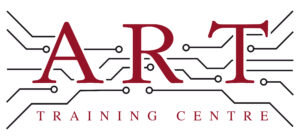Definition
Selective Soldering is a soldering process used in electronics manufacturing that allows specific areas of a printed circuit board (PCB) to be soldered without affecting other components. This method is particularly useful for joining through-hole components to PCBs while minimizing the risk of damage to nearby surface mount devices. It is a crucial component in the assembly and repair of electronic devices, ensuring precise and reliable connections.
How It’s Used in the Industry
In electronics assembly, Selective Soldering is applied by first placing the PCB on a conveyor system. The board is then preheated to prepare the soldering area. A soldering machine uses a nozzle to apply solder only to the designated joints, typically for through-hole components. This process ensures that surrounding components remain unaffected by heat and solder. For technicians in training, understanding selective soldering is vital as it enhances skills in precision soldering, while experienced professionals benefit from its efficiency and effectiveness in producing high-quality assemblies.
History & Origins
Selective Soldering began to gain prominence in the electronics manufacturing industry during the late 1980s and early 1990s. As technology advanced, the need for reliable soldering techniques that could accommodate both surface mount and through-hole components became evident. The development of standards, such as those from IPC, helped formalize processes and improve quality control. This evolution allowed manufacturers to produce more complex PCBs with increased reliability, making selective soldering an essential technique in modern electronics production.
Variations
There are several variations of Selective Soldering, including wave soldering and hand soldering. Wave soldering involves passing a PCB over a wave of molten solder, which can cover multiple joints simultaneously, whereas selective soldering targets specific areas. Additionally, there are automated systems that can perform selective soldering with high precision. Understanding these differences is important for learners, as each method has its own advantages and is suited to different types of components and assembly requirements.
Modern Applications
Today, Selective Soldering is widely used in electronics production, particularly for assembling complex PCBs that include both surface mount and through-hole components. It is essential in the repair of electronic devices and in professional training environments where students learn about advanced assembly techniques. The process is critical for ensuring high-quality solder joints, reliability of electronic products, and compliance with IPC standards, which govern the quality and performance of electronic assemblies.
Practical Tips & Training
When working with Selective Soldering, it’s important to maintain a clean workspace and use proper safety equipment, such as gloves and goggles. Inspect solder joints regularly to ensure quality, using tools like magnifying glasses or microscopes. Structured training and certification in selective soldering techniques can greatly enhance skills and ensure adherence to industry standards, making it a valuable asset for both new and experienced technicians.


